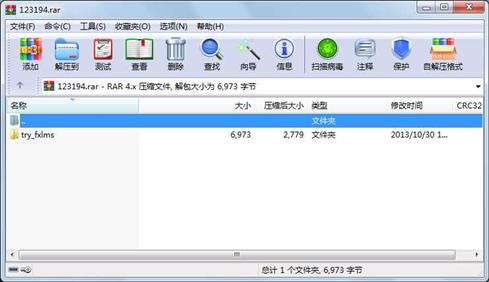资源简介
37724122try_fxlms.rar

代码片段和文件信息
%--------------------------------------------------------------------------
% One of my friends asked me about the FxLMS algorithm. So in return
% I provided him a little example of a single channel feed-forward active
% noise control system based on the FxLMS. You can find many good
% information in “Active Noise Control Systems - Algorithms and DSP
% Implementations“ written by S. M. Kuo and D. R. Morgan in 1996.
%
% Here is the sketch of the system.
%
% +-----------+ +
% x(k) ---+--->| P(z) |--yp(k)----------------> sum --+---> e(k)
% | +-----------+ ^- |
% | | |
% | \ ys(k) |
% | +-----------+ +-----------+ | |
% +--->| C(z) |--yw(k)-->| S(z) |---+ |
% | +-----------+ +-----------+ |
% | \ |
% | \----------------\ |
% | \ |
% | +-----------+ +-----------+ |
% +--->| Sh(z) |--xs(k)-->| LMS |<-------+
% +-----------+ +-----------+
%
% I used FIR filter to model P(z) C(z) S(z) and Sh(z).
%
% Imagine that the noise x(k) is propagating from the source to the sensor
% through the fluid medium P(z). The sensor measures the arriving noise as
% yp(k).
%
% To reduce noise we generate another ‘noise‘ yw(k) using the controller
% C(z). We hope that it destructively interferes x(k). It means that the
% controller has to be a model of the propagation medium P(z). Least mean
% square algorithm is applied to adjust the controller coefficient/weight.
%
% However there is also fluid medium S(z) that stay between the actuator
% and sensor. We called it the secondary propagation path. So to make the
% solusion right we need to compensate the adjustment process using Sh(z)
% which is an estimate of S(z).
%
% Let‘s start the code :)
%
% Developed by Agustinus Oey
% Center of Noise and Vibration Control (NoViC)
% Department of Mechanical Engineering
% Korea Advanced Institute of Science and Technology (KAIST)
% Daejeon South Korea
%--------------------------------------------------------------------------
% Set simulation duration (normalized)
clear
T=1000;
% We do not know P(z) and S(z) in reality. So we have to make dummy paths
Pw=[0.01 0.25 0.5 1 0.5 0.25 0.01];
Sw=Pw*0.25;
% Remember that the first task is to estimate S(z). So we can generate a
% white noise signal
x_iden=randn(1T);
% send it to the actuator and measure it at the sensor position
y_iden=filter(Sw 1 x_ide 属性 大小 日期 时间 名称
----------- --------- ---------- ----- ----
文件 1526 2010-11-23 01:28 try_fxlms\license.txt
文件 5447 2013-10-30 10:24 try_fxlms\try_fxlms.m
目录 0 2013-10-30 10:39 try_fxlms
----------- --------- ---------- ----- ----
6973 3
相关资源
- PID_AutoTune_v0.rar
- vspd7.2.308.zip
- 价值2k的H漫画小说系统
- Pythonamp;课堂amp;笔记(高淇amp;400;集第
- ddos压力测试工具99657
- UML建模大全
- 开源1A锂电池充电板TP4056原理图+PCB
- m1卡 ic卡可选择扇区初始化加密软件
- TSCC.exe
- FTP课程设计(服务端+客户端)
- 计算机图形学 边填充算法实现代码
- 电力系统潮流计算程序集合
- oracle数据迁移项目实施方案
- Web Api 通过文件流 文件到本地
- Visio图标-最新最全的网络通信图标库
- Spire API文档
- OpenGL参考手册
- Python中Numpy库最新教程
- SPD博士V5.3.exe
- 直流无刷电机方波驱动 stm32 例程代码
- layui后台管理模板
- 仿知乎界面小程序源代码
- 云平台-阿里云详细介绍
- photoshop经典1000例
- scratch垃圾分类源码(最终版本).sb
- IAR ARM 7.8破解
- TI CCS V5.4 安装步骤及破解文件
- 松下plc FP-XH的驱动
- 局域网硬件信息收集工具
- 加快Windows XP操作系统开机速度
 川公网安备 51152502000135号
川公网安备 51152502000135号
评论
共有 条评论